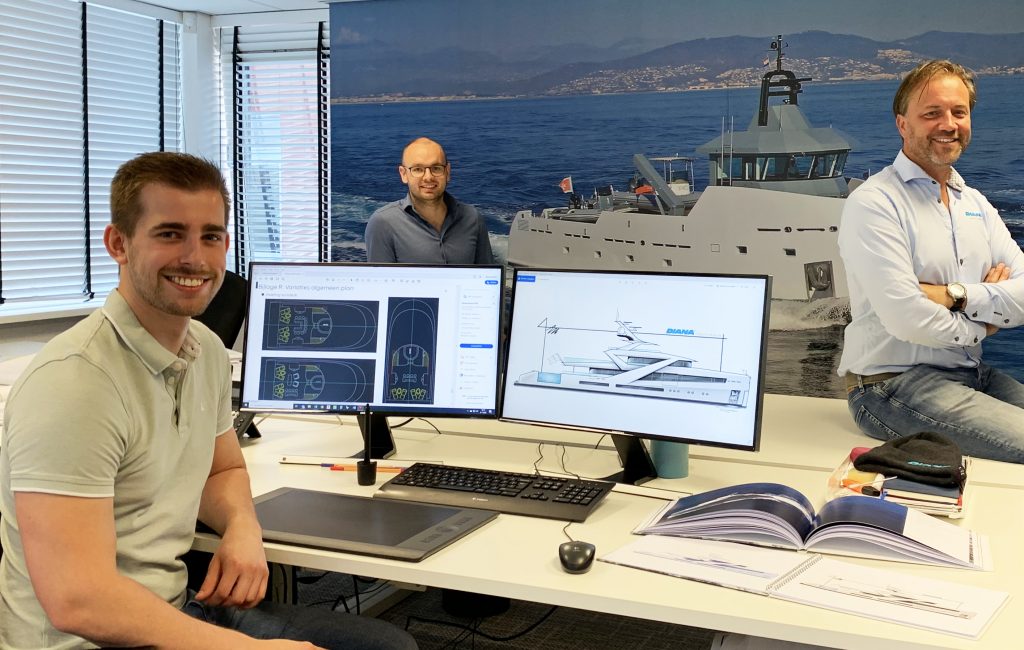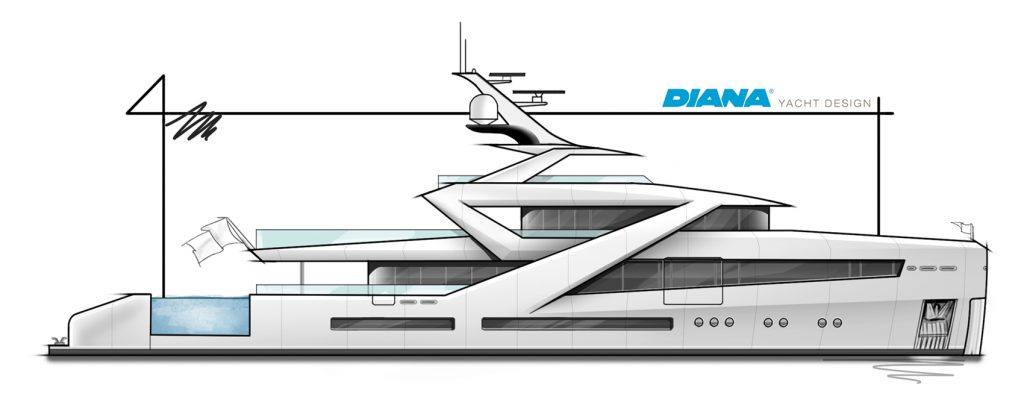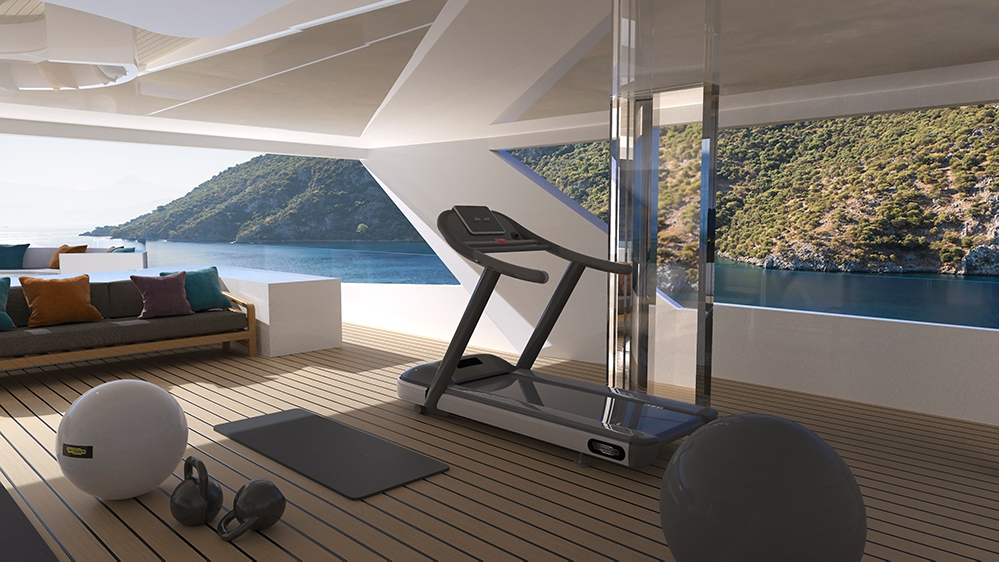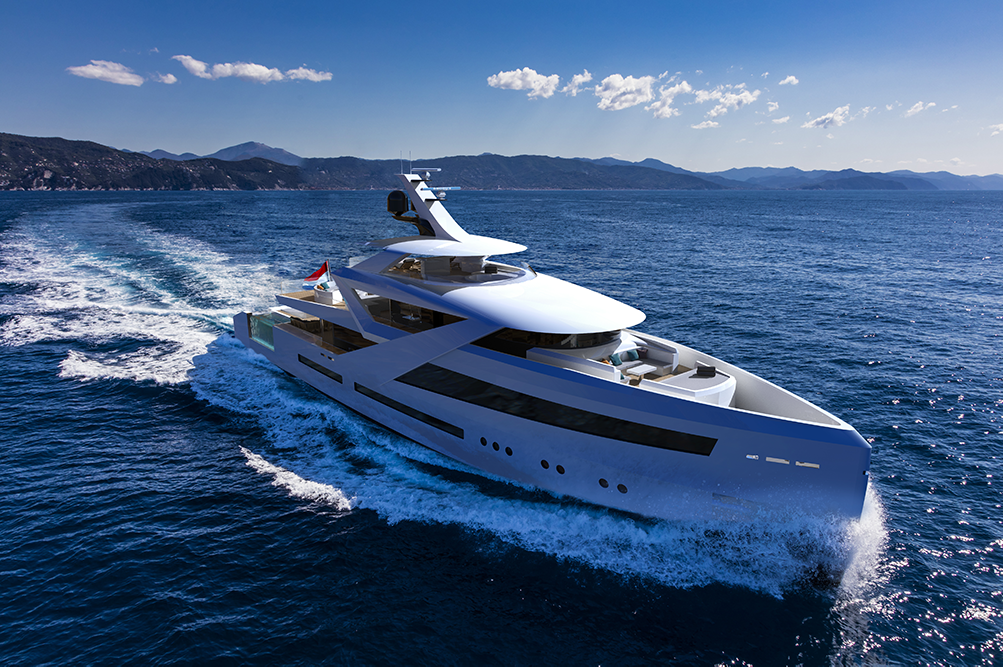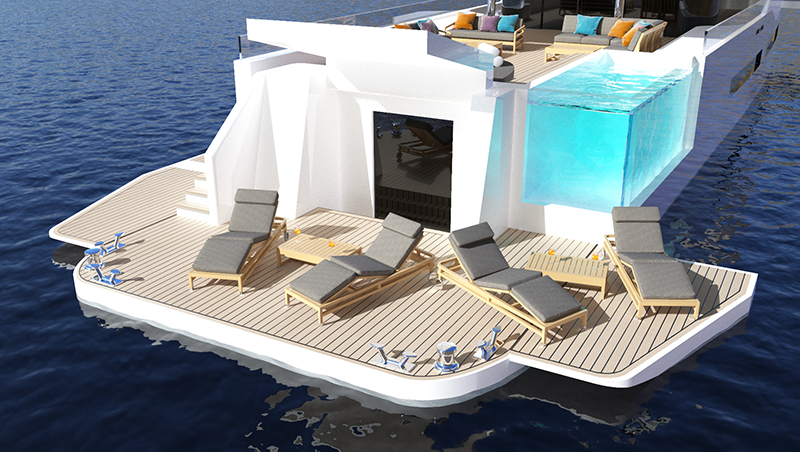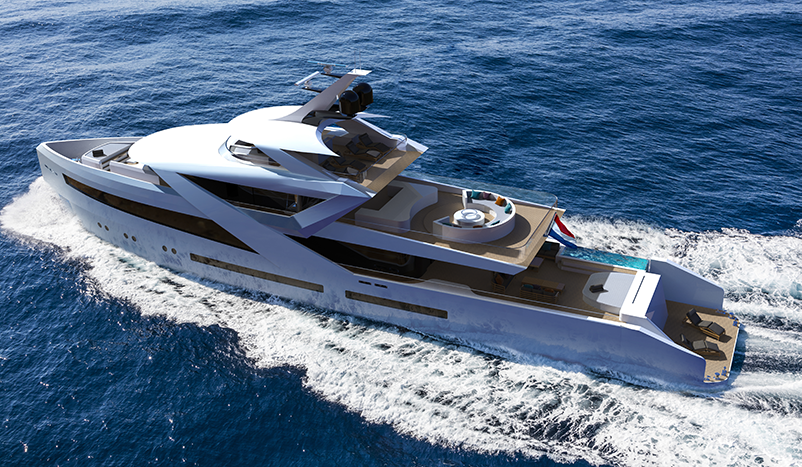A day in the life of a superyacht exterior designer
Written by:
Georgia Tindale
Publication:
SuperYachtTimes
Who isn’t intrigued by the life of a superyacht designer? Of all of the industry’s careers, that of the superyacht exterior designer must rank amongst the most fascinating and mysterious out there. And demanding too: with a barrage of new concepts being released every year by design studios, it is a competitive landscape for any designer looking to make their mark on a saturated market. Plus, for those of us outside the superyacht design sphere, the process of exactly how an exterior design comes together from sketch to concept (as well as what happens next if a client is keen to build the boat), is shrouded in mystery. To satisfy our curiosity about the day-to-day life of a superyacht designer, we speak to Hans-Maarten Bais, Creative Director and Casper Marelis, Naval Architect and Designer from Diana Yacht Design.
How did you first venture into superyacht design?
Casper: I always knew I had to do something with boats, so I studied Naval Architecture. I did my final internship at Diana Yacht Design and stayed there to start my career. The design aspect of yachts has always intrigued me and at DIANA I got the opportunity to thoroughly explore superyacht design.
Hans-Maarten: My family were all fishermen and I was crazy about everything that floats. I was always drawing – mostly fishing boats – so choosing to study Naval Architecture was the only thing for me to do. During my studies I was introduced to the yachting world which I never knew existed before! I was lucky to do my internship at Diana Yacht Design, as in the mid 1990s lots of yards and design offices were having a hard time. I really liked it and never left the company. DIANA has already existed for 50 years and my two partners and I have been running the company the last 14 years .
Tell me what a typical day in your job looks like.
Casper: There are days which involve the 3D modelling of a new yacht and examining every small detail of its design. On other days a potential client will call and ask if it is possible to look into a design and create a first profile sketch to see if it works. But the best days involve presenting and discussing a design with the client and seeing their first reaction.
Hans-Maarten: Besides running the company, I’m also the creative director. At DIANA our management team is very hands-on. I also work on projects and am responsible for most of the hull modelling work. So there is no such thing as a typical day. One day I’m writing emails for most of the day, on another day I might be modelling the hull of a new project or brainstorming with the team about marketing. I could also be taking a plane and going to meet potential clients, talking about new designs or overseeing a project being built in another country.
What are your favourite elements of your role as a designer?
Hans-Maarten: The thrill of starting from scratch. It all starts with a blank sheet of paper. After the design and a build period of, let’s say three years, there is a beautiful yacht in the water which is ready to carry her owners to even the most remote places in the world. And you can feel satisfied in the knowledge that she will be in service for at least another four or five decades.
Talk me through how you work as a designer alongside the naval architects at Diana Yacht Design
Hans-Maarten: The key to the success of our designs is that most of our designers all have a Naval Architecture degree, so they are aware of the im(possibilities)! DIANA was founded almost 50 years ago and a huge amount of data is stored in our drawings. By combining our experience with the latest technologies, our designs are creative, innovative and always based on reality.
Finally, what have been some of your favourite projects to work on and why?
Casper: The concepts we do are a lot of fun because we can create something new and there are no limitations on what we can present to the world.
Hans-Maarten: Every project brings special memories with it. Motor yacht Amante (now Odyssey) was my first design which was built and I felt extremely proud when she was finished. Pamela V was really nice, as the client contacted us directly and was very involved during the whole build. Legend was great as it was an adventure to do the rebuild with only limited time available, and there was an additional challenge to completing the project since her documentation was destroyed in a fire. I could name twenty more projects if I had the time!
Case study: Zenith concept
So, that covers the day-to-day in superyacht design. But what about the nitty-gritty of concept development? To discover more about how a superyacht concept is developed from a blank sheet of paper to the final renders, we caught up with Nick Hoedjes, Industrial Design Engineering trainee at Diana Yacht Design, who has devised a brand new superyacht concept which he completed during lockdown: the 46-metre Zenith.
Talk me through the inspiration behind Zenith
I wanted to create a yacht focused on the outdoors for a young client with a very active lifestyle. One of the yachts that inspired me was the 77-metre Feadship motor yacht Pi because of her striking design in combination with her curved glass superstructure.
There are many different stages to getting a concept from the initial sketch to the final renders. What were the main changes you had to make along the way as the project developed?
One of the main challenges was incorporating all of the different lifestyle elements into a 46-metre yacht. Some of the innovations have not been seen on a yacht of this size before. Another major challenge was getting the gross tonnage beneath 499GT, as this was one of the requirements I was given for my design. This resulted in an efficient layout, but with plenty of features still on board.
How did you imagine the client for Zenith?
In my research prior to the design phase, I defined a new type of superyacht owner, as I found that owners are getting younger and have a more active lifestyle. This resulted in me incorporating various amenities into my concept, like the swimming pool, swim platform, sauna and winter garden gym.
What are the standout features which make Zenith unique?
We wanted to create a yacht with a powerful exterior design ready for the future. Her sharp exterior lines give her an extraordinary appearance. Her superstructure is relatively small and positioned forward. This positioning enhances the space on the aft decks. While part of her superstructure is able to open up with the winter garden, it is possible to create even more deck space.
One of the unique features on board has to be the swimming pool. Located on the aft main deck in the side of the hull, it truly is one of a kind. Two of the sides are completely made of glass, offering incredible views from the pool both above and underwater. The elegant beach area on the lower deck features a large extendable swim platform and is the ideal place for afternoons spent enjoying the open sea.
What would be the main challenges of building Zenith?
At the start of developing the concept, I set a goal that you would be able to produce this yacht right away, which is why I used existing techniques and solutions in the design. One of the challenges in the building process would be the tank layout to keep her levelled, since the swimming pool is situated on the side of the yacht and the large glass panels might also prove to be a challenge.
What would the process be if a client wanted to build Zenith?
Of course, we would be very proud if Zenith were to be built. We would help the client to find a shipyard and to put together a team that really understands the wishes and needs of the client. Once selected, the shipyard would work hand-in-hand with the design team to finalise every detail of the yacht.
